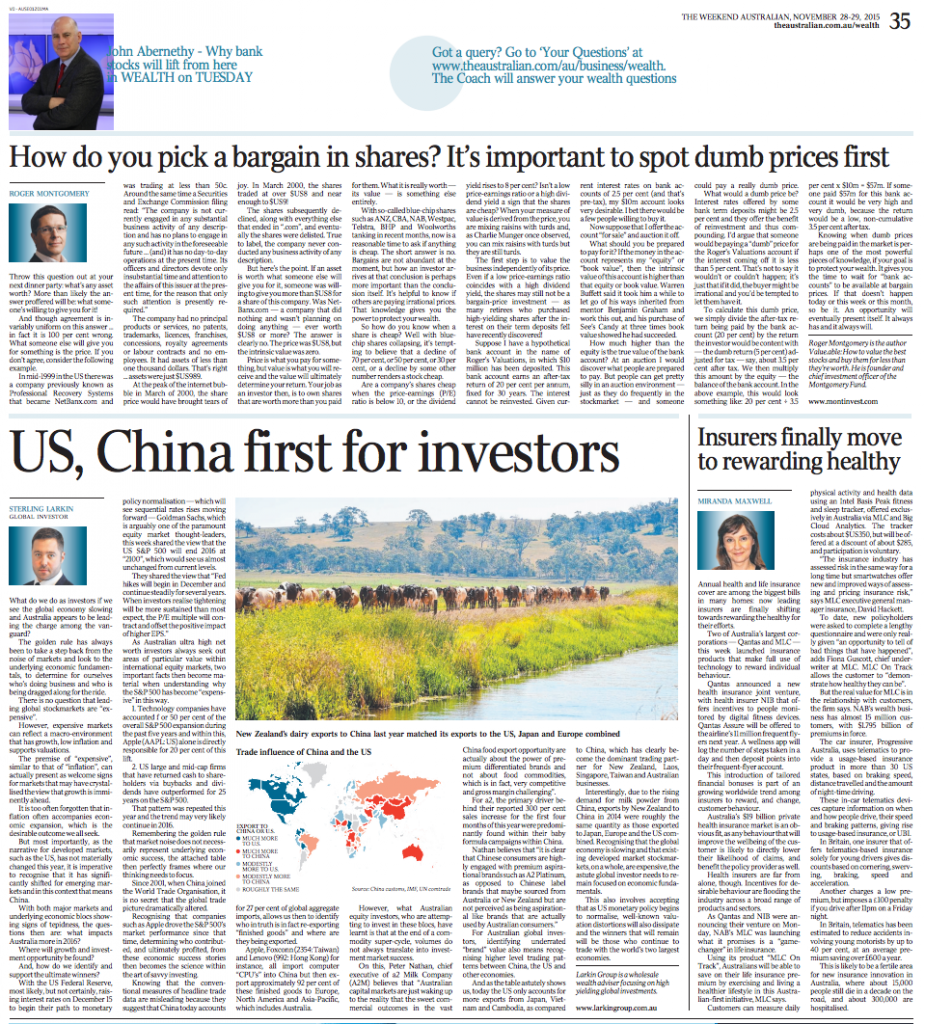How do you pick a bargain in shares? It’s important to spot dumb prices first
With so-called blue-chip shares such as ANZ, CBA, NAB, Westpac, Telstra, BHP and Woolworths tanking in recent months, now is a reasonable time to ask if anything is cheap.
In this column published in The Australian, Roger discusses how to identify a bargain. You can read all of the team’s press articles through browsing our media library, view more articles here.
You can read all of the team’s press articles through browsing our media library, view more articles here.
MORE BY RogerINVEST WITH MONTGOMERY

Roger Montgomery is the Founder and Chairman of Montgomery Investment Management. Roger has over three decades of experience in funds management and related activities, including equities analysis, equity and derivatives strategy, trading and stockbroking. Prior to establishing Montgomery, Roger held positions at Ord Minnett Jardine Fleming, BT (Australia) Limited and Merrill Lynch.
He is also author of best-selling investment guide-book for the stock market, Value.able – how to value the best stocks and buy them for less than they are worth.
Roger appears regularly on television and radio, and in the press, including ABC radio and TV, The Australian and Ausbiz. View upcoming media appearances.
This post was contributed by a representative of Montgomery Investment Management Pty Limited (AFSL No. 354564). The principal purpose of this post is to provide factual information and not provide financial product advice. Additionally, the information provided is not intended to provide any recommendation or opinion about any financial product. Any commentary and statements of opinion however may contain general advice only that is prepared without taking into account your personal objectives, financial circumstances or needs. Because of this, before acting on any of the information provided, you should always consider its appropriateness in light of your personal objectives, financial circumstances and needs and should consider seeking independent advice from a financial advisor if necessary before making any decisions. This post specifically excludes personal advice.
 You can read all of the team’s press articles through browsing our media library, view more articles here.
You can read all of the team’s press articles through browsing our media library, view more articles here.
Just an observation, Roger, in relation to your remark in the Australian article below:
“Warren Buffett said it took him a while to let go of his ways inherited from mentor Benjamin Graham and work this out, and his purchase of See’s Candy at three times book value showed he had succeeded”.
I think that there is a general misconception by value investors that Buffett’s greatest returns were achieved only after he dumped his Benjamin-Graham-cigar-butt-ways and took up the approach of buying wonderful-companies-at-fair-prices. Yet that was not the case. Buffett’s annualised returns when he was running his partnerships and was buying “cigar butt” companies were almost 30%. That was between 1957 and 1969. During the same time, the Dow had a negative return in 5 out those 12 years.
By contrast, between 1965 and 2014 when Berkshire, Buffett’s investment vehicle, became a behemoth, it achieved a still super respectable compounded annual return of 19.4%. But that was a far cry from 29+% returns that Buffett had achieved in his deep value investment days and when managing much smaller sums of money.
From that, I think that one can draw the conclusion that Buffett’s transition to buying wonderful-companies-at-fair-prices was not due to the Benjamin Graham approach not being immensely profitable but to the amount of money that Buffett had come to manage.
And it’s certainly the case that in Australia, the some one could manage strictly using the Graham approach would be very small indeed.